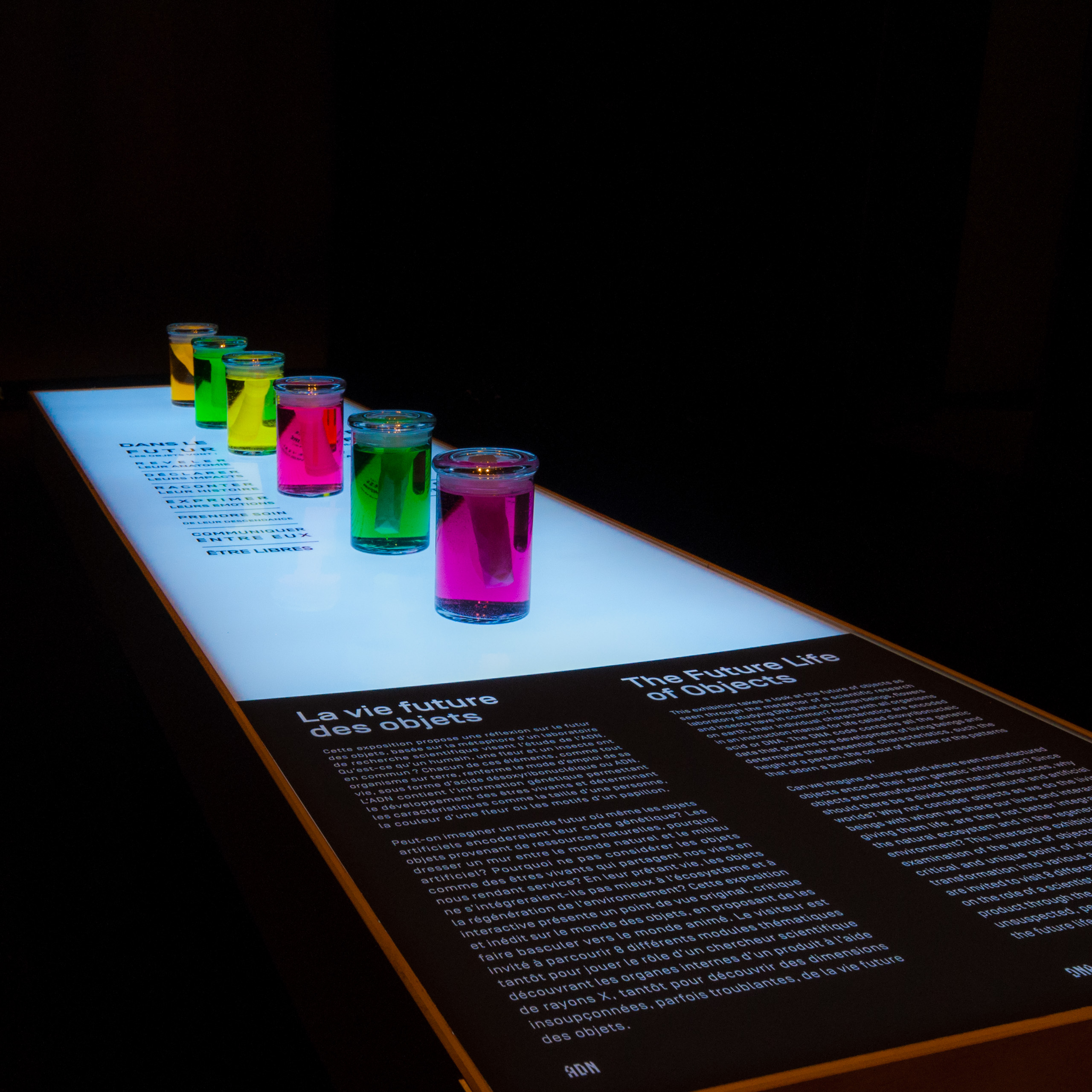New exhibition at the FOFA Gallery takes a look at objects and how our relationship with them might change in the future
The Faculty of Fine Arts Gallery, located in the EV building, has been transformed into a ‘biological’ laboratory for its new exhibit.
DNA/ The Future Life of Objects is the culmination of three years of research from students and professors from Concordia and l’Université de Montreal. The project imagines a future in which artificial objects could possibly be encrypted with a genetic code—just like humans, plants and animals. It is a research-creation project led by Martin Racine, an associate professor and graduate program director in the department of design and computation arts at Concordia.
According to Racine, DNA/The Future Life of Objects is a reflection on the world of material and artificial objects. He is interested in the environmental impact of design, the relationship that people have with the things that surround them and how, as a consumerist society, these objects are treated.
DNA/The Future Life of Objects includes a manifesto, containing six points that objects should follow in the future. According to this manifesto, in the future, objects will reveal their anatomy, declare their impacts, tell their stories, express their emotions, care for their descendants and communicate with each other.
“A manifesto is always a way to create some change. So it’s a way to raise awareness, and then it’s an effort to change society in a way,” said Racine. “That’s why the manifesto has both a provocative aspect, but also tries to sensitize the public with their relation with objects.”
This manifesto acts as a starting point for the rest of the exhibition. Eight modules are on display in the main space of the FOFA Gallery, with six of them directly relating to one of the principles suggested in the manifesto.
Each containing different kinds of objects, such as flashlights and toasters,, these modules evoke the feeling of being in a natural history museum and watching specimens on display. Each has interactive elements, such as an X-ray machine with a knob that can be turned to ‘see’ the inside mechanisms of a flashlight.
This interactive element is a particularly strong part of the exhibition, as the audience becomes a participant as opposed to remaining a passive viewer.
“I think the expo becomes much more interesting when the visitor is called to touch, to feel, to hear, to manipulate—it makes the experience of the visitor much more compelling. So that was really the objective here,” said Racine.
In addition to the modules in the main gallery space, the exhibition also includes a video depicting an analysis of the material make-up of objects about to be thrown away, and how they could instead be recycled. Parts of the exhibition are on display in the York Corridor vitrines as well. Everyday, mundane objects, such as rulers and phones, are placed in jars containing colourful liquids, reminiscent of a scientist’s’ collection of biological specimens.
As a whole, the exhibition challenges the viewer to try understanding objects in a different light. Instead of a mere commodity to be used at one’s convenience, technology and objects need to be understood as part of a greater picture, especially given their environmental and ecological impacts. The exhibition totally alters the FOFA Gallery space through lighting and sound, evoking the mood of a laboratory rather than an art gallery.
The FOFA Gallery is open Monday to Friday from 9 a.m. to 5 p.m. Admission is free. DNA/The Future Life of Objects will be displayed in the gallery until Dec. 9
To learn more about DNA/The Future Life of Objects, visit metadna.ca.




